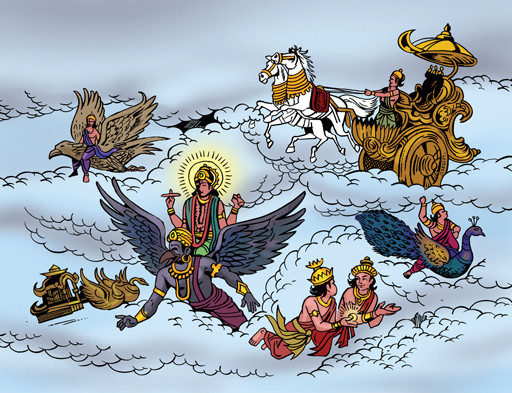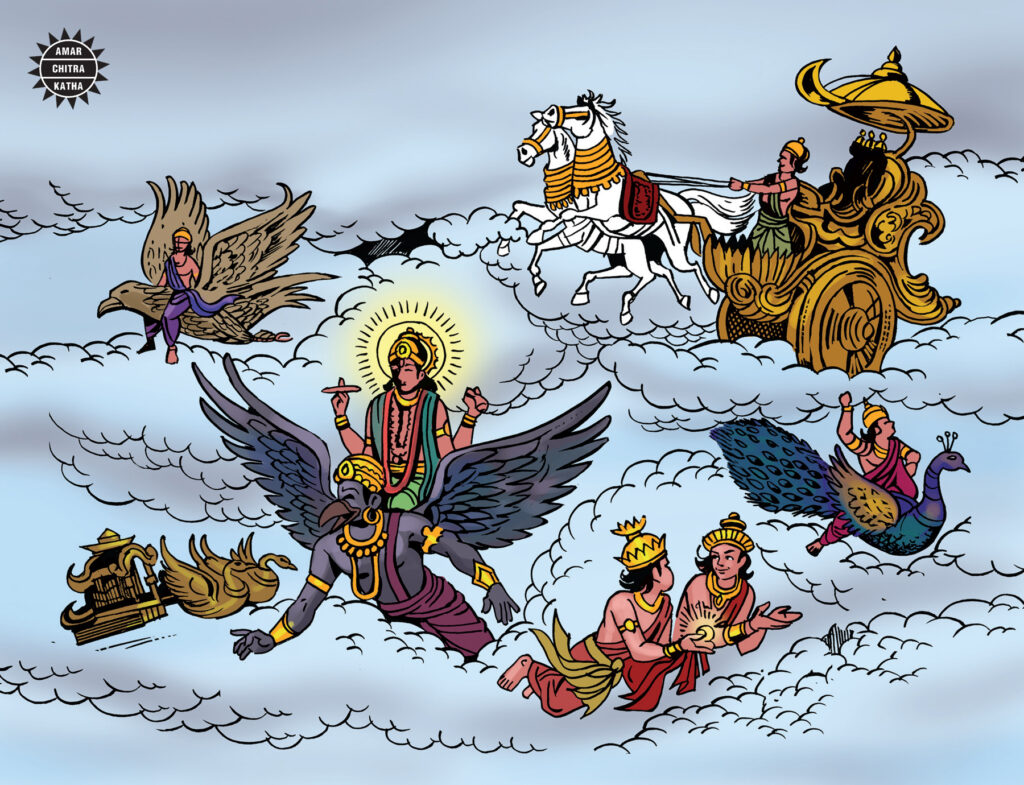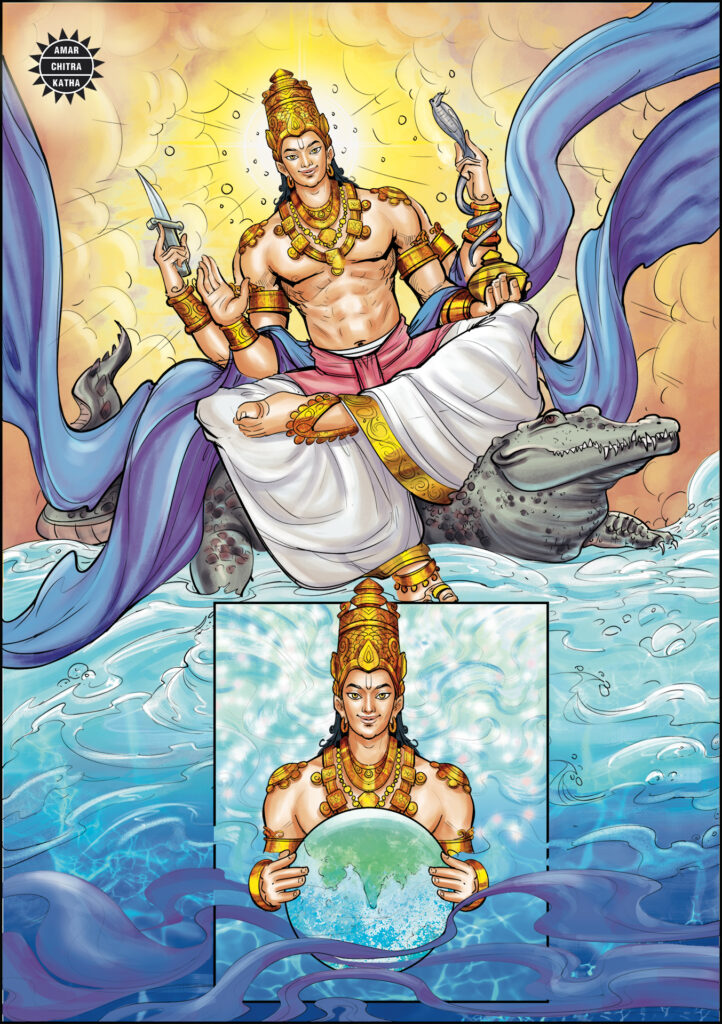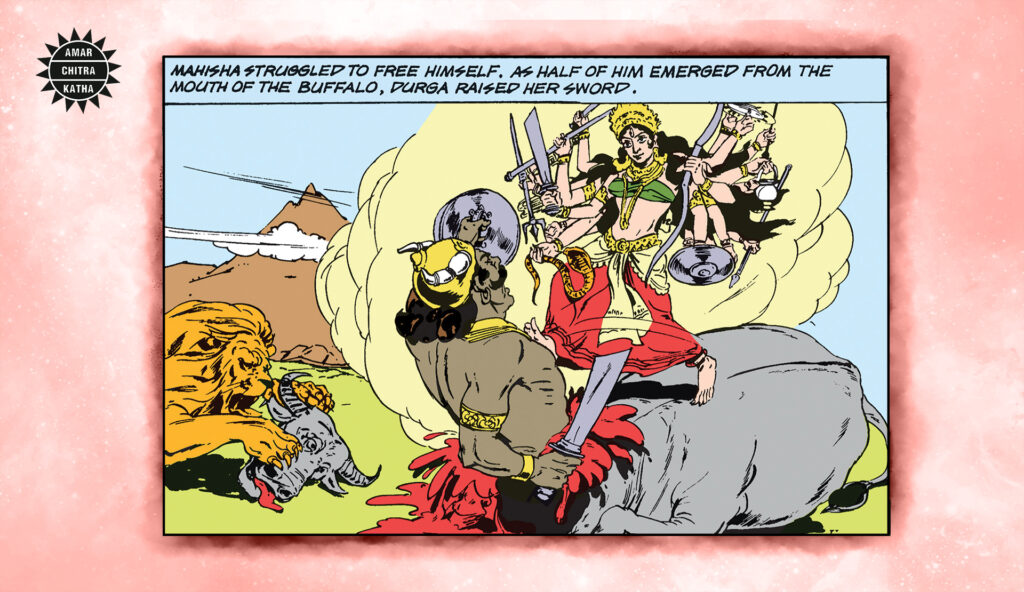Myths of Monsoon’s End
- October 6, 2025


Myths of Monsoon’s End
- October 6, 2025
By Shree Sauparnika V
The end of the monsoon has always been more than a shift in weather. It is a time when the skies open after months of storm, when myths, epics, and festivals converge to give meaning to the retreat of rain. For ancient India, the parting clouds were not just a natural occurrence but a chapter in a cosmic story.
In Vedic hymns, Indra is praised as the lord of thunder and rain, the one who wields the vajra (thunderbolt). His most famous battle was against Vritra, the serpent-demon who held back the waters of the world. When Indra struck Vritra, the rivers and rains were released. Myths like these offered explanations for the cycle of rain and drought, flood and retreat.
To receive more such stories in your Inbox & WhatsApp, Please share your Email and Mobile number.

The end of monsoon, when the clouds scattered and the skies cleared, was often seen as Indra withdrawing after victory, taking his forces of rain back to the heavens. Alongside Indra stood Varuna, the god of oceans and cosmic order (rita). Varuna’s role was to ensure that the waters returned to their rightful places—the seas, rivers, and underground springs—after the season of excess rain. In folk belief, his steadying hand kept the floods from swallowing villages once the storm season was over.

Natural imagery reinforced these myths. The rolling away of dark clouds was likened to an army in retreat, while the golden sunlight of Sharad (autumn) was seen as the radiance of the gods returning to earth.
The great epics paid close attention to the rhythm of the seasons. In the Ramayana, Rama waited through the monsoon months in Kishkindha, forging his alliance with the vanaras. Only after the rains ended could his army march towards Lanka and begin the great war. The clear skies marked a time of decisive action—a season of battles where dharma would triumph.
In the Mahabharata, too, rains dictated the rhythm of war. Armies traditionally rested during the monsoon, when rivers swelled and chariots could not move. The Kurukshetra war began in late autumn, after the rainy season, a detail that reflects how deeply natural cycles shaped even epic storytelling. The departure of the rains was symbolically tied to moments of reckoning, conflict, and eventual renewal.
As the monsoon retreated, festivals marked the shift from storm to clarity.
Sharad Navratri (September–October): Nine nights of worship, ending in the victory of the goddess Durga over Mahishasura. The timing reflects a cosmic renewal after the cleansing rains.

Dussehra (Vijayadashami): Celebrated at the end of Navratri, it recalls Rama’s victory over Ravana, linking the festival directly with the post-monsoon return of clarity and light.
Diwali: The festival of lights, celebrated a few weeks later, marks Rama’s return to Ayodhya after fourteen years of exile. Lamps are lit not only to welcome him, but also to mark the joy of harvests ripening after the rains.
Together, these festivals mirror the natural journey: from turbulence to triumph, from cleansing rains to abundant harvests.
The retreat of the monsoon has always been sung into memory. In the folk songs of North India, the clouds are imagined as weary travellers making their way back home, while the clear autumn moon is celebrated as a symbol of purity and peace. The Toda people of the Nilgiris tell of two divine beings, Kaarsh and Kawntaiahh, who brought the south-west monsoon to their land. Their very breaths created storms and rain, and the swirling mists around sacred peaks still mark the onset and retreat of the season. Such myths root the monsoon deeply in local landscapes, making weather itself a divine presence.
In Maharashtra, ballads tell of Indra’s return to his heavenly palace, leaving behind a refreshed and fertile land. Even classical music echoes this change of season: while monsoon ragas like Megh Malhar are sung to invite rain, autumnal ragas such as Durga and Bhairav celebrate the calm clarity of retreating skies. Across regions, the end of the rains inspire art, ritual, and devotion—transforming a natural shift into a sacred story.
The monsoon’s departure has never been just about weather. It was a reminder that all things, even the heaviest clouds, will pass, making way for new beginnings. Ancient India read the skies as a sacred text, where every season told a story. And just as our ancestors found meaning in the shifting clouds, we too can learn from nature’s lesson: change is not to be feared but welcomed, for with every ending, comes the promise of renewal.
Read more wonderful legends and folktales at our very own ACK Comics App.
To receive more such stories in your Inbox & WhatsApp, Please share your Email and Mobile number.

Comic of The Month
The Naval Journey of India Book I
This book is the first of a three-book series that takes a deep and detailed look at India's Naval History and a deep insight into the lives of our men and women in white. But any series on the Indian Navy has to start at the very beginning - exploring India's celebrated maritime history. Join our little hero, Bharat, and his grandfather, Commodore Sagar, as they sail into the deep blue waters of time. Book I of The Naval Journey of India takes a sweeping look at India's maritime endeavours, how the seas impacted us over millennia and how the oceans made us who we are.